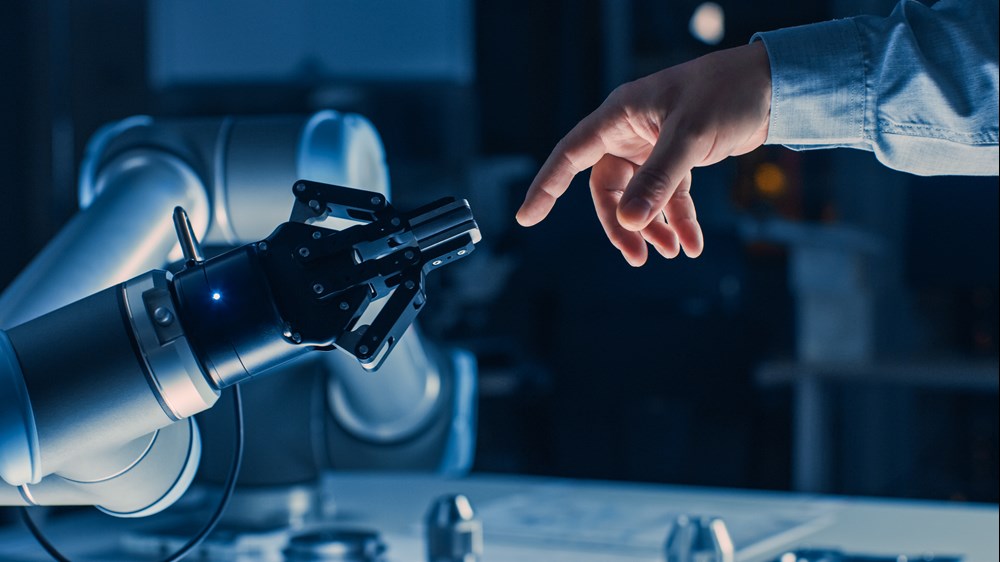The field of robotics has undergone significant advancements in recent years, with robots being increasingly used in various industries, including healthcare, manufacturing, and transportation. One of the key areas of research in robotics is the development of touch sensors, which enable robots to perceive and respond to their environment in a more human-like way. In this article, we will explore the concept of robot touch sensor integration, its benefits, and the current state of research in this field.

What are Touch Sensors?
Touch sensors, also known as tactile sensors, are devices that detect and measure the pressure, temperature, and vibration of objects in contact with them. These sensors are designed to mimic the human sense of touch, allowing robots to interact with their environment in a more intuitive and natural way. Touch sensors can be used in a variety of applications, including object manipulation, grasping, and navigation.
Benefits of Robot Touch Sensor Integration
The integration of touch sensors into robots offers several benefits, including:
- Improved Object Manipulation: Touch sensors enable robots to grasp and manipulate objects with greater precision and care, reducing the risk of damage or injury.
- Enhanced Human-Robot Interaction: By allowing robots to perceive and respond to touch, touch sensors facilitate more natural and intuitive human-robot interaction, enabling robots to assist humans in a more effective and efficient way.
- Increased Safety: Touch sensors can detect and respond to potential hazards, such as collisions or accidents, allowing robots to take evasive action and prevent injury or damage.
- Expanded Application Range: Touch sensors enable robots to perform tasks that require a high degree of dexterity and precision, such as surgery, assembly, and inspection.
Types of Touch Sensors
There are several types of touch sensors that can be integrated into robots, including:
- Capacitive Sensors: These sensors use changes in capacitance to detect touch and pressure.
- Resistive Sensors: These sensors use changes in resistance to detect touch and pressure.
- Piezoelectric Sensors: These sensors use piezoelectric materials to detect touch and pressure.
- Optical Sensors: These sensors use optical signals to detect touch and pressure.
Challenges and Limitations
While touch sensors have the potential to revolutionize the field of robotics, there are several challenges and limitations that must be addressed, including:
- Sensor Calibration: Touch sensors require precise calibration to ensure accurate and reliable sensing.
- Sensor Noise: Touch sensors can be affected by noise and interference, which can impact their accuracy and reliability.
- Sensor Durability: Touch sensors can be prone to wear and tear, which can impact their longevity and performance.
- Integration Complexity: Integrating touch sensors into robots can be complex and require significant expertise and resources.
Current State of Research
Researchers are actively working to address the challenges and limitations associated with touch sensors, and significant progress has been made in recent years. Some of the current areas of research include:
- Sensor Development: Researchers are developing new types of touch sensors that are more accurate, reliable, and durable.
- Sensor Calibration: Researchers are developing new methods for calibrating touch sensors, including machine learning and artificial intelligence.
- Sensor Integration: Researchers are developing new methods for integrating touch sensors into robots, including the use of modular and flexible sensor systems.
- Human-Robot Interaction: Researchers are studying the role of touch sensors in human-robot interaction, including the development of more natural and intuitive interfaces.
Real-World Applications
Touch sensors are being used in a variety of real-world applications, including:
- Robotic Surgery: Touch sensors are being used in robotic surgery to enable more precise and minimally invasive procedures.
- Industrial Automation: Touch sensors are being used in industrial automation to enable more efficient and effective manufacturing processes.
- Service Robotics: Touch sensors are being used in service robotics to enable more natural and intuitive human-robot interaction.
- Prosthetics and Exoskeletons: Touch sensors are being used in prosthetics and exoskeletons to enable more natural and intuitive control.
FAQ
- What are touch sensors used for in robotics?
Touch sensors are used in robotics to enable robots to perceive and respond to their environment in a more human-like way, including object manipulation, grasping, and navigation. - What are the benefits of integrating touch sensors into robots?
The benefits of integrating touch sensors into robots include improved object manipulation, enhanced human-robot interaction, increased safety, and expanded application range. - What types of touch sensors are available?
There are several types of touch sensors available, including capacitive, resistive, piezoelectric, and optical sensors. - What are the challenges and limitations associated with touch sensors?
The challenges and limitations associated with touch sensors include sensor calibration, sensor noise, sensor durability, and integration complexity. - What is the current state of research in touch sensor integration?
Researchers are actively working to address the challenges and limitations associated with touch sensors, and significant progress has been made in recent years, including the development of new types of touch sensors, sensor calibration methods, and sensor integration techniques.
Conclusion
The integration of touch sensors into robots has the potential to revolutionize the field of robotics, enabling more natural and intuitive human-robot interaction, improved object manipulation, and increased safety. While there are challenges and limitations associated with touch sensors, researchers are actively working to address these issues, and significant progress has been made in recent years. As the field of robotics continues to evolve, it is likely that touch sensors will play an increasingly important role in enabling robots to interact with their environment in a more human-like way. Whether in industrial automation, service robotics, or prosthetics and exoskeletons, touch sensors have the potential to transform the way we interact with robots and the world around us.
Closure
Thus, we hope this article has provided valuable insights into The Future of Robotics: Integrating Touch Sensors for Enhanced Human-Robot Interaction. We thank you for taking the time to read this article. See you in our next article!
